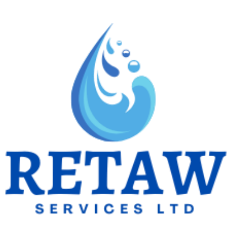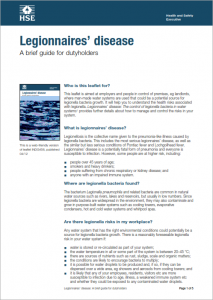RETAW Services
Legionella Risk Assessment
Retaw Services Ltd – Legionella risk assessment reports deliver impartial, prioritised, and practical remedial actions, along with suggested site-specific ongoing control measures. Our assessors are experienced in commercial, residential and industrial Legionella risk assessment. We use a software based survey template to deliver assessment reports that include: –
- Executive summary
- Scope of assessment, including clear identification of buildings systems and their use.
- Identification of key personnel, both staff & contractors. (Allocation of Responsibilities).
- Identification of the risk systems. (System Identification).
- Schematic diagrams or reference to them. (Separate document).
- Results of condition surveys including: operating parameters, temperatures, system inspections are available but not included in our standard report in order to minimise the size and complexity of the report.
- Analysis and evaluation of risk for each system including an explanation of how the risk rating is derived.
- Recommended and prioritised corrective actions (Short term and longer term) to eliminate, minimise or lower risk. (Assessment Findings).
- The site and system specific control measures (monitoring, inspection & treatment, etc) including identification of sentinel outlets and or other relevant sample and inspection points. (Control Measures).
- What is Legionnaires’ disease?
- Where does it come from?
- How do people get it?
Straight from Health and Safety Executive
Legionellosis is a collective term for diseases caused by legionella bacteria……..
BS8580-1:2019 Water quality – Risk assessments for Legionella control – Code of practice
- As a code of practice, this British Standard takes the form of guidance and recommendations. It should not be quoted as if it were a specification and particular care should be taken to ensure that claims of compliance are not misleading.
- This standard helps agree on the scope between a service provider and a dutyholder (or designated representative), for example, the provision of schematic diagrams should be agreed upon (existing versions available, required, or to be produced as part of the assessment).

The Legionella Control Association requires that Retaw Services Ltd need to tell our clients that there are several key responsibilities that the dutyholder has a legal duty to address.
- The dutyholder must ensure there is a Legionella risk assessment record that includes all systems where water is stored or used in any premises controlled by the dutyholder (COSHH Regs). This risk assessment should be regularly reviewed to ensure it is valid and reassessed when required. (See L8 paras 32 and 47).
- Any invitation to potential service providers to quote/tender for Legionella risk assessment services should have a clear scope of work defined by the dutyholder or their representative.
- Make reasonable enquiries of the service provider regarding proof of competence of individuals involved in carrying out the Legionella risk assessment e.g. provision by the service provider of: training records, competence evaluations, examples of previous work, etc. (See LCA Buyers Guide 702.17 06-17)
- Schematic diagrams and asset registers should be available in order to inform and help the risk assessor (See
- L8 paras 38 and 40). Pipework engineering drawings may be too detailed to allow simple communication of Legionella risk but schematic diagrams must show detail relevant to Legionella control.
- The findings of the risk assessment including the required corrective actions and the control measures should be implemented. The output from the scheme of control should be recorded and used in any subsequent review of risk.
- A written scheme of control should be produced and maintained and the output from this should be recorded and used in any subsequent review of risk.
- Regular reviews of the effectiveness of Legionella control activities should be carried out to verify the written scheme of control remains adequate.
- The dutyholder should have change management procedures and/or regular review procedures should be in place to determine if the existing risk assessment remains valid, suitable and sufficient. If it is not, then a reassessment of the risk is required.

